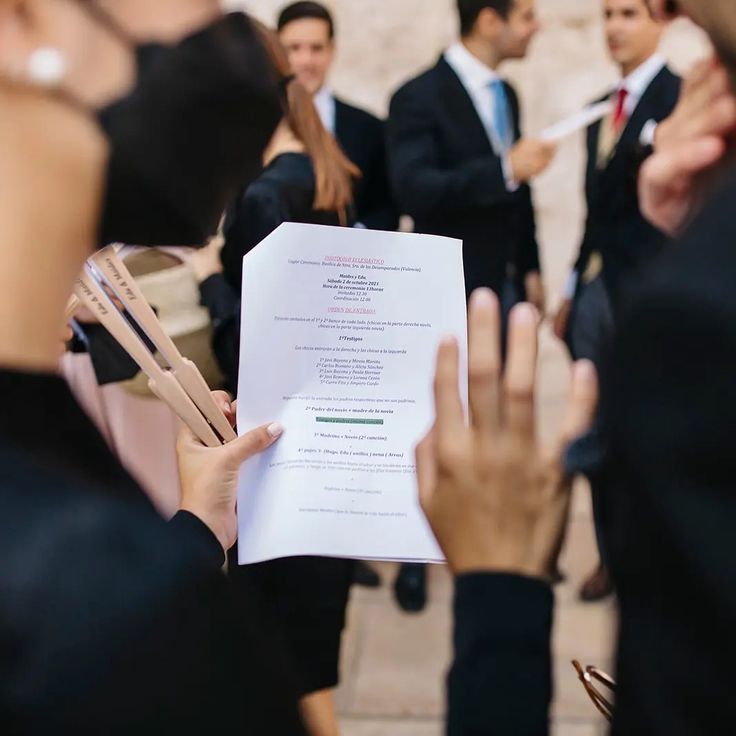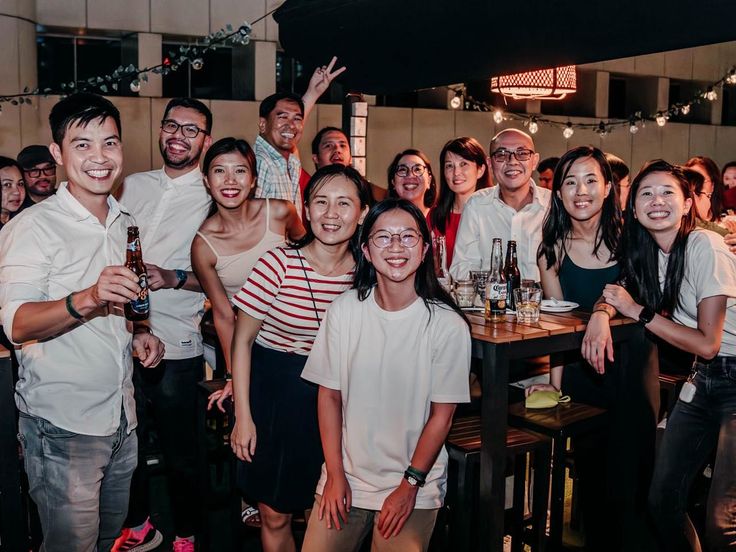 If you work in internal communications, HR, or your company’s union committee, chances are you’ve organized at least one internal event. But beyond the laughter, group photos, budget reports and deadlines—have you ever paused to ask yourself: Was that event actually successful?
If you work in internal communications, HR, or your company’s union committee, chances are you’ve organized at least one internal event. But beyond the laughter, group photos, budget reports and deadlines—have you ever paused to ask yourself: Was that event actually successful?
Let’s break down what truly defines success when it comes to an internal event.
Key Criteria for a Successful Internal Event
1. The Level of Connection the Event Created
Don’t just ask: How many people showed up? Instead, ask: Did they genuinely connect with each other?
One common mistake when evaluating an internal event is focusing solely on numbers: attendee headcount, clicks, likes, social shares. But a truly successful internal event isn’t measured by quantity—it’s measured by the quality of connection.
a. Employee Engagement During the Event
Instead of only checking off names on a sign-in sheet, ask yourself:
-
Were employees actively participating in the activities?
-
Did they stay until the end of the program?
-
Did they recommend the event to others or invite colleagues to join (if part of a series)?

💡 Example: An internal talk with just 30 attendees might seem small, but if 20 questions were asked, discussion ran overtime, and employees requested a follow-up session—that’s a deeply successful event with real engagement.
b. Interaction Across Departments
Here’s one often-overlooked metric: Did the event help people connect across teams?
If Team A spends the whole time with Team A, even the flashiest teambuilding games won’t boost interdepartmental bonding. Real success happens when you break the silos.
Observe and ask:
-
Did employees talk to someone from another department?
-
Can they remember names or feel more comfortable with colleagues outside their immediate team?

💡 Pro tips:
-
Run a quick post-event survey: “Did you meet someone new?”, “Can you name one colleague from another team you interacted with?” or “Do you feel more connected after the event?”
-
Take notes during the event: Which groups easily blended in?
Which ones stayed isolated?
2. Atmosphere – Invisible, But Everything
We often spend hours perfecting the stage, the sound system, the lighting, the visuals. But when it comes to an internal event, it’s not the spotlight that lingers in employees’ memories. It’s how the event made them feel.
A successful event doesn’t need to be glamorous. But it must absolutely:
-
Create a warm, comfortable, and emotionally safe space
-
Make employees feel seen, valued, and respected
-
Spark genuine conversations and connections

a. A Friendly, Welcoming Vibe
Sometimes, it’s the little things that set the tone:
-
A warm, casual welcome—not too cheesy, not too formal
-
An MC who knows how to connect, not just read the agenda
-
Icebreaker games that are light, inclusive, and non-intimidating
💡 Tip: Start a workshop with something fun and low-pressure—like a lightning round question: “Who here has ever had lunch with the boss?”
b. The Afterglow Matters Too
The atmosphere doesn’t end when the last slide is shown. Ask yourself:
-
Are people still talking about the event a few days later?
-
Are photos and videos being shared naturally in group chats?
-
Is there a standout moment or quote that’s being passed around?

💡 Pro tip: Capture these post-event ripples—on Zalo, Slack, or even in casual office chats. They’re small signals of a truly impactful internal event.
c. Measured by Pride and Belonging
You can’t always measure atmosphere with numbers. But you can feel it through pride, emotional attachment, and informal feedback.
Try asking these questions in a post-event mini survey:
-
“Do you feel proud to be part of this company?”
-
“Would you want to join the next internal event?”
-
“Did you share any photos from the event with friends or family?”
The answers will say more than any KPIs ever could!
3. Does Your Internal Event Truly Speak to What Employees Need?
An event can be flawlessly planned, beautifully executed, and still leave people feeling… nothing.
That’s what happens when the content doesn’t truly resonate with the inner needs of your employees. This is one of the most overlooked aspects of internal event planning. It’s easy to fall into the trap of familiar formats: opening speech, games, food, performances—but rarely do we stop and ask:
“What do employees really want from this event?”

For example, if you’re planning something for a tech team that often works solo behind screens, they may not need a long, drawn-out seminar or a flashy party. Instead, a quiet offsite retreat with space for personal sharing and deeper connection might go a long way.
On the flip side, if you’re working with an energetic sales team, a game-based competition or fun-filled boarding game session might hit the sweet spot.
📌 So, how do you find out what they need?
Ask them. Seriously. Short surveys or casual check-ins with team leads can give you powerful insights.
And here’s the magic: when employees feel heard even before the event begins, they already feel more respected—and more connected.
4. The Post-Event Ripple: Measuring Internal Communication Impact
A great internal event doesn’t end when the lights go out and the chairs are stacked away.
Its true power shows in what happens after—in the stories told, the memories shared, and the culture quietly reinforced.
Here’s what you should look out for:
-
Are photos and videos shared organically?
If employees are posting, tagging the company, and sharing their favorite memories without being chased down by the internal comms team—that’s a very good sign. Voluntary engagement is far more powerful than any corporate push. -
Are there small stories being passed around?
A touching quote from the CEO. A moment of genuine teamwork. A hilarious game fail. These bite-sized memories carry more emotional weight than a polished post-event report filled with dry stats. -
Did internal channels continue the story?
Maybe it’s a “Best Moment” poll on your company app. Maybe it’s behind-the-scenes photos or short reflections from employees compiled into a fun recap. Whatever it is, the goal is to keep the energy alive—long after the last confetti falls.
📌 Quick tip: Assign one person to be your real-time media lead during the internal event.
Their job? Capture great moments, upload live updates in internal chat groups, and help the buzz start before the event even ends.
It’s a small move with big engagement returns.
5. Planting Cultural Seeds for the Long Run
Here’s a question that many internal event planners forget to ask:
Does this event help nurture our company culture in the long run?
It’s easy to get caught up in organizing a flawless one-day program—but a truly impactful internal event should go beyond logistics. It should play a role in the bigger cultural journey of the company.
Ask yourself:
-
Does the event reinforce a core cultural message?
For example: innovation, accountability, collaboration? If the theme aligns with your company’s values, it becomes more than just a day of fun—it becomes a tool for alignment. -
Are there any cultural elements that continue after the event?
Maybe a team ritual is born. Maybe people keep using an internal hashtag. Maybe a new monthly team check-in starts because of that one bonding activity. These carry your event’s impact into the everyday. -
Do employees see your values come to life through this event?
A well-crafted internal event gives shape to abstract values.
It’s one thing to say “We care.” It’s another to show it through a meaningful, shared experience.
A typical year-end party is just that—a party. But if you turn it into a reflective journey, filled with real stories, heartfelt appreciation, and a hopeful look toward the future, it becomes a cultural catalyst.
Success Isn’t Just in the Numbers
When the event wraps up and the lights go down, it’s tempting to finally exhale and move on. But here’s the thing: that’s exactly when the most valuable part begins.
An internal event isn’t truly complete until you’ve taken a good, honest look back. And no, we’re not just talking about budget sheets and attendance reports.
A meaningful event debrief should answer:
-
What went well—and why?
-
What didn’t quite land—and what was the root cause?
-
What feedback are you hearing from different groups: employees, managers, guests?
-
What can be done better next time—with specific, actionable suggestions?

📌 Don’t wait until it’s too late to ask for feedback.
Prepare a simple, open-ended survey before the event even happens. Schedule it to go out within 24 hours post-event, while the memories are still fresh.
Include space for both ratings and free-form thoughts. You might be surprised by what people are willing to share—if you give them the right space and tone.
Taking the debrief seriously isn’t just about being thorough.
It’s a mindset—a sign of professionalism, humility, and a commitment to constant improvement.
Successful Internal Events Build a Lasting Company Culture
A truly successful internal event isn’t just about flawless logistics or sticking to the agenda. It’s about moments that matter—when people feel heard, connected, and inspired. Whether it’s a shared laugh, a touching story, or simply the quiet reassurance of “I belong here”—that’s what lingers.
To create this, event organizers need to shift from simply “running events” to shaping culture. That means setting clear goals, measuring more than numbers, and thoughtfully reflecting on what the event leaves behind. It takes preparation, good communication, and a genuine desire to listen—not just to what people say, but how they feel.
And let’s be clear: success doesn’t depend on the budget.
It depends on how well you understand your people. When your team becomes the heart of the event, the impact will speak for itself—quietly, deeply, and lastingly.
Want to plan better, faster?
📌 Company Trip: Comprehensive 8-Step Checklist
📌 Organizing Your First Event? Here’s the Only Guide You’ll Need

















WRITE A COMMENT